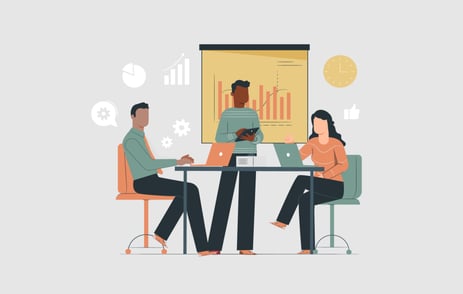Digital transformation continues to be at the forefront for many organization staffers. However, they may not realize that one of the biggest obstacles in their way is their own culture and thinking. Not only does this slow down change and innovation, but in many instances, it also affects membership as well. So, how can organizations understand whether their methods are outdated and start to make strides towards a digital transformation? It all begins with self-reflection and planning.
Identifying outdated thinking and infrastructure
Breaking a habit can be difficult, especially when it comes to the way we work and operate on a daily basis. With some organizations having served their members for generations, there is a hesitation to make any adjustments.
A good example of this outdated thinking is the transition from in-person to remote work. For many organizations, the last 18 months have been an unexpected and challenging journey. According to Peggy Winton, CEO at Association for Intelligent Information Management, these changes were “bound to happen … and the pandemic simply brought it about in a very dramatic and quick way.”
For organizations that were hesitant to change, the challenges cost them in productivity, revenue and talent. Those that took the initiative to change had greater success and realized that changes could be done quickly – and they do not necessarily need to be perfect. Instead, it created an opportunity to streamline and more effectively use tools that can help boost productivity and effectiveness.
3 Tough Questions You Should Be Asking
The demands on the attention span and time of your members are only increasing, which means the chances for them to move on are increasing. As organizations begin to consider how to change their mindset, there are some critical questions to ask.
1. Are we still adding any value for our members?
For many organizations, the mission statement drives all initiatives and changes. And in some instances, this can limit or take them away from the true focus of any organization which is the value it brings to its members. When faced with this situation, leaders should ask themselves:
- Are we personalizing our content for our members?
- Do our members absolutely need us?
- Do we play an integral role in their day-to-day lives?
- Are we creating opportunities for them to make life-long connections?
According to Peggy, “it’s not just publishing a bunch of journals that have been done the same way for years and years.” Instead, organizations need to make themselves invaluable to members by providing the best educational resources, simplifying their lives and creating opportunities for lifelong connections, which are modern focuses for associations.
2. How do we serve them?
Understanding how you interact with your audience is essential to determining whether or not your organization is successful. One thing to consider is your delivery mechanism, which includes the systems, tools and apps your members use. If the platform your members use to access your resources is clunky or not user-friendly, it prevents you from effectively reaching your audience.
According to Peggy, “don’t be afraid to look outside of the association community for those tools.”
3. Do we have the right people and culture?
As the Great Resignation continues to impact organizations around the world, evaluating your talent can be a challenging but beneficial process. Realize there may be gaps in skill level and creativity – especially in terms of generational talent within your organization.
Ask yourself: Do we have the right people and culture in place, and are we willing to listen to the answer and make changes? This can mean bringing on new employees or making leadership changes for the better of your organization.
Planning for a digital-first future
The bottom line is nothing stays the same and the pace of change is only going to increase. New trends emerge every day and membership demographics will continue to shift. In order to attract that next audience, curating information is the most important function for associations. By creating and consolidating valuable information, your organization will always be an education for new and existing association professionals.
One of the biggest takeaways when crafting a digital-first association is the importance of challenging existing mindsets. According to Peggy, many associations limit themselves with thoughts such as “we can’t do this, our board won’t let us do this, or our members won’t want us to do this.”
However, what association leaders need to realize is that they would not exist unless the community had some sense of trust in them to begin with. Changing that mindset will allow for more innovation and ensure the organization is accommodating new and old generations alike.
Tags:
Association Management
October 23, 2021

